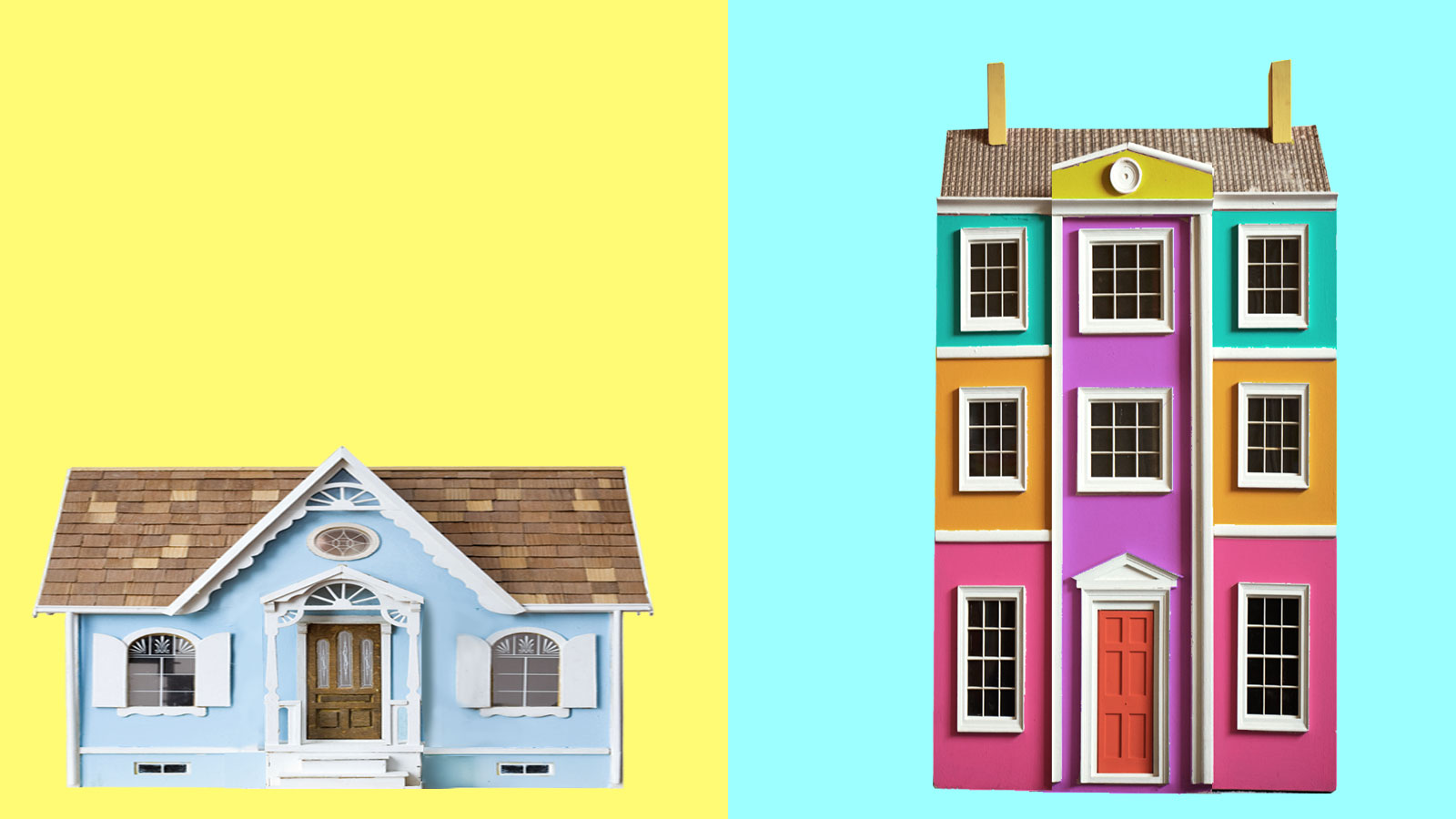Q. Dear Umbra,
Say you have two houses with the same square footage, but one is all on one level and one is three floors. Which one is more energy-efficient by structure? Or are they the same?
Eve A.
Seattle, Wash.
A. Dearest Eve,
I have always had an affinity for multi-story houses. Where better than the second (or third) floor to receive declarations of love a la Juliet, imprison one’s enemies a la Saruman, receive more declarations of love a la Rapunzel, or enjoy winter’s finest recreational activities indoors a la that kid in Home Alone? So I’m pleased to inform you that the number of stories in a home does indeed matter, environmentally speaking — and that the multi-story abode will almost always beat out the sprawling ranch. Three cheers for stairs!
Before I explain why your triple-decker comes out on top, I should point out that actual results may (and do) vary, based on everything from what a home is built with to how much insulation it has to which direction it faces. If you own a home, or are thinking of purchasing a home, you will need to investigate these important details to really understand the building’s efficiency.
The primary energy advantage of a multi-story home has to do with the fact that it has less surface area than a single-story home of the same square footage, which means less foundation and roof space exposed to the outside air. You see, the more surface area your home bares to the outdoors, the more opportunity there is for heat to sneak in or out through conduction. As you no doubt know, heat wants to move from warmer areas to cooler ones in a never-ending quest to bring balance to the universe. Keeping our homes comfortable is really just a battle against physics; since nearly half of our home energy use — 48 percent — goes toward heating and cooling, we definitely want to win that battle.
We can and should help our cause by taking important steps like adding insulation and weatherstripping, but generally, the more surface area in a house, the harder the heating/cooling system will have to work. For the same reason, a house with a simpler, more cubic design will be more energy efficient than an elaborate layout with lots of nooks and crannies. The smaller footprint of a multi-story home also means less concrete foundation area — a prime spot for cold leaks. In winter, as the warm air from your heating system rises (there’s that troublesome physics again), it pulls cold air in from the bottom up. Less cold air leaking in equals less cold air messing with your perfectly adjusted thermostat.
As I said at the outset, though, much depends on the specifics of the actual house in question. Even a quick look online will reveal people who swear their energy bills doubled when they moved from one story to two, and others who say the exact opposite. Welcome to the wonderful world of home-moanership.
But energy bennies aren’t the only reason to love a multi-story design, Eve. Plumbing pipes can be shorter in a home with stairs, which means less overall material used and less heat lost as water travels through them. And taller homes tend to disturb the environment less: Because of that smaller footprint, they preserve more yard space for rainwater drainage, natural vegetation, and habitat for friendly neighborhood birds and bees, not to mention leaving ample room for eco-friendly features like veggie gardens, compost piles, and rain barrels.
And if you’re a city mouse? By necessity, city planners have been ahead of the curve on this one for a long time. Building up instead of out lets us pack more people and structures into limited ground space. This historical reality, known by the fancy name urban density, translates to more walkable neighborhoods, more efficient public transportation, and less driving for everyone who lives there. And let’s not forget all the athletic opportunities that towering buildings can bring to a town: skyscraper stair-climb races, anyone?
In short, Eve, tall buildings are pretty much the bee’s knees. But I encourage every homeowner to get an energy audit, no matter what type of house you live in. These assessments are often available for free and will tell you exactly what steps you can take to increase your energy efficiency. Check with your electric utility, your state energy agency, or the Department of Energy to learn more.
Nude descending a staircasely,
Umbra



